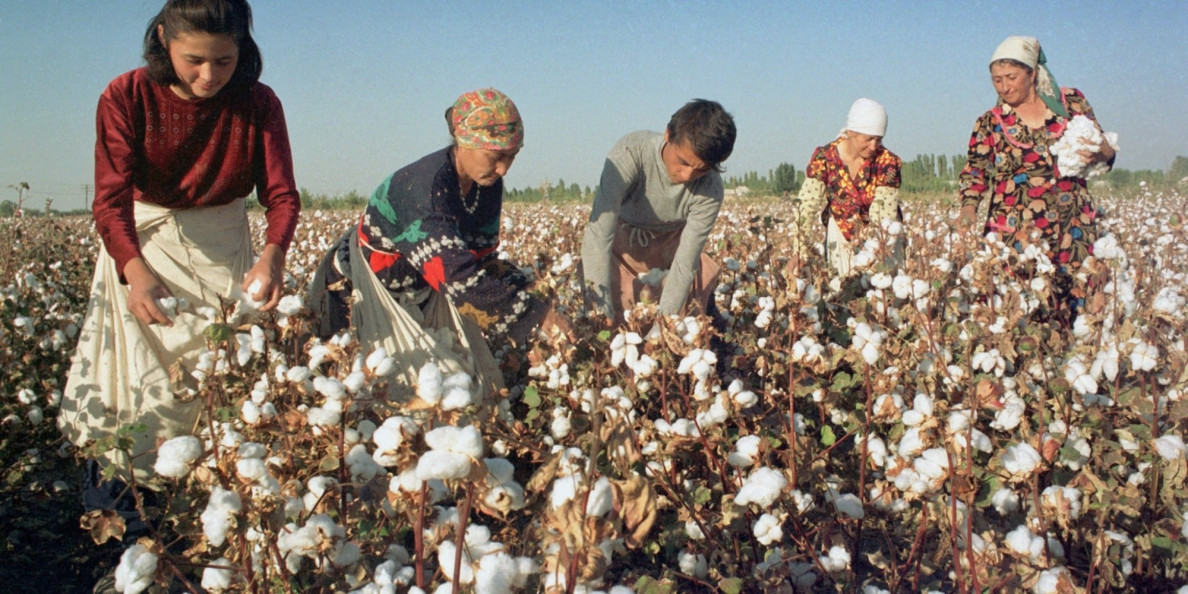by Arthur Friedman
A new International Labor Organization report to the World Bank published Tuesday finds that the systematic use of child labor in Uzbekistan’s cottonharvest has come to an end and that concrete measures to stop the use of forced labor have been taken.
The report, “Third-party Monitoring of Measures Against Child Labor and Forced Labor During the 2017 Cotton Harvest in Uzbekistan,” is based on more than 3,000 unaccompanied and unannounced interviews with a representative sample of the country’s 2.6 million cotton pickers. It shows that the country is making significant reforms on fundamental labor rights in the cotton fields.
The report should serve to remove a stigma that has plagued the Uzbek cotton sector and has caused many U.S. and European brands to not buy the raw material.
The ILO said it has been monitoring the cotton harvest for child labor since 2013. In 2015, it began monitoring the harvest for forced and child labor as part of an agreement with the World Bank.
Interviews carried out by the monitors took place in all provinces of the country and included cotton pickers and other groups directly or indirectly involved in the harvest, such as local authorities, education and medical personnel. In addition, a telephone poll of 1,000 randomly selected persons was conducted. Before the harvest, the ILO experts organized training for some 6,300 people directly involved with the recruitment of cotton pickers.
The results confirm that the large majority of the 2.6 million cotton pickers were engaged voluntarily in the annual harvest in 2017 and that there is a high level of awareness in the country about the unacceptability of both child and forced labor. The report confirms earlier findings that the systematic use of child labor in the cotton harvest has ended though continued vigilance is required to ensure that children are in school.
It also confirms what representatives of the country’s textile industry and Uzbekistan’s ambassador to the United Nations, Bakhtiyor Ibragimov, said at last month’s Texworld USA trade show that the country had “phased out,” child and forced labor in its cotton growing industry.
Ibragimov noted that the government has instituted incentives for investment and exporting for the textile industry, including exemption from income and property taxes, and easing of costs for Customs payments and fees.
The government is investing in the industry, including $65.5 million to create a textile complex in the Bukhara region and $22 million to support construction of a yarn plant in Denovsky.
The ILO said instructions have been given by the Uzbek national authorities to local administrations to ensure that all recruitment of cotton pickers is on a voluntary basis. In September, an order was given withdrawing certain risk groups (students, education and medical personnel) from the harvest at its early stage.
Moreover, cotton pickers’ wages have been increased in line with recommendations by the ILO and World Bank. The ILO recommends that the government continues to increase wages and also address working conditions more broadly to further attract voluntary pickers.
The ILO Third-Party Monitoring project in Uzbekistan will now focus on the remaining challenges, particularly the need for further awareness raising and capacity building, which varies between provinces and districts. It will ensure that all those involved in recruitment will have the information and tools needed to ensure that cotton pickers are engaged in conformity with international labor standards.
The monitoring and results from a pilot project in the area of South Karkalpakstan also show that cotton picking economically empowers women in rural areas. The cotton harvest provides many women with an opportunity to earn an extra cash income which they control and can use to improve the situation of their families.


